





Uzbekistan is a landlocked country in Central Asia, bordered by Kazakhstan to the north, Kyrgyzstan to the northeast, Tajikistan to the southeast, Afghanistan to the south, and Turkmenistan to the southwest. The country has a total land area of approximately 447,400 square kilometers (172,700 square miles).
Uzbekistan's history is a rich tapestry woven with diverse cultures and civilizations, dating back to the vibrant
Silk Road era where ideas and goods converged. The region saw the ascendancy of empires, notably the Timurid dynasty,
fostering cultural brilliance. The 20th century brought Soviet influence, driving rapid industrialization. The nation's
independence in 1991 heralded a new era.
Iconic cities like Samarkand and Bukhara were centers of art, science, and faith. Figures like Amir Timur and scholar
Al-Khwarizmi left enduring legacies. Uzbekistan's heritage merges Zoroastrian, Islamic, and Soviet elements, evident in its architecture,
customs, and cuisine. The nation's history underscores resilience and cultural preservation. Present-day Uzbekistan honors its history
through comprehensive travel experiences and accessible academic courses. From Silk Road architectural marvels to government-backed educational insights,
Uzbekistan's commitment ensures its history remains a wellspring of knowledge, unity, and pride for its people.

Uzbekistan is known for its warm hospitality and generous spirit. Guests are treated with great respect and they take care of each one, and are often invited to share meals and cultural experiences with their hosts.

Uzbek cuisine is a blend of various influences, including Persian, Turkish, and Russian. Some of the most popular dishes include plov (a rice dish with meat and vegetables), shashlik, and lagman (a noodle soup with vegetables and meat).

Uzbekistan is famous for its traditional crafts, including silk weaving, ceramics, and embroidery. These crafts are often passed down through generations and are an important part of the country's cultural heritage.
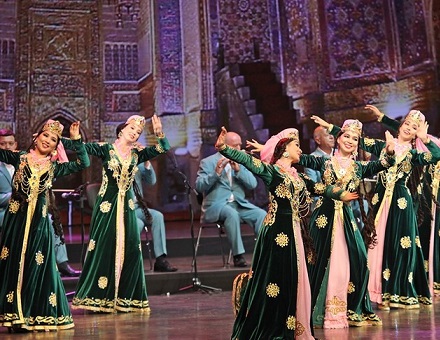
Uzbek music and dance are an integral part of the country's cultural identity. Traditional music includes a variety of instruments, such as the dutar (a two-stringed lute) and the doyra (a percussion instrument). Traditional dance forms include the katta ashula and the lapar.

Uzbekistan celebrates a variety of festivals throughout the year, many of which are linked to Islamic traditions. Some of the most important festivals include Navruz (the Persian New Year), Eid al-Fitr (the end of Ramadan), and Eid al-Adha (the Festival of Sacrifice).,

Uzbekistan was represented mainly by salads as most of the main dishes contain boiled or fried beef or lamb. However, we grow a great amount of vegetables and fruits under the sunny sky and now the cooks have come up with replacing meat with vegetables in common dishes.
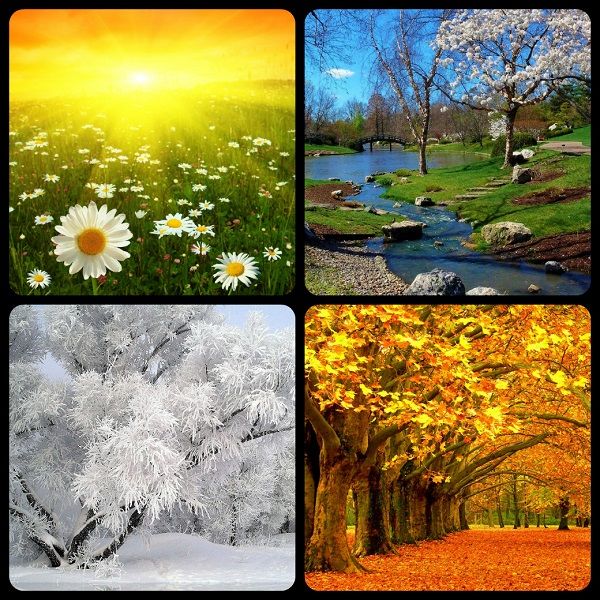
Uzbekistan is a landlocked country in Central Asia, with a continental climate characterized by hot summers and cold winters. The climate varies depending on the region, but overall, Uzbekistan experiences hot, dry summers and cold, snowy winters.
In the lowland areas of the country, such as the Fergana Valley and the southern part of the country, temperatures can reach up to 45°C (113°F) in the summer months, with little rainfall. In the winter, temperatures can drop below freezing, and snow is common in the mountainous regions.
In the higher elevations of the country, such as the Tian Shan and Pamir Mountains, the climate is much cooler and wetter, with snow lasting throughout the year. The mountainous regions also experience more precipitation than the lowland areas.
Overall, the best time to visit Uzbekistan is during the spring and autumn months, when the weather is mild and comfortable. Summers can be very hot and dry, while winters can be very cold and snowy, making travel difficult. However, the weather can vary greatly depending on the region, so it's important to check the specific weather conditions for your destination before you go.
In conclusion, Uzbekistan has a continental climate with hot summers and cold winters, with temperatures varying depending on the region. The best time to visit is during the spring and autumn months, when the weather is mild and comfortable.

Uzbekistan has a rich history of medical knowledge and practices, dating back to ancient times. The region was home to some of the earliest medical schools in the world, and its physicians were highly respected throughout the Islamic world.
One of the most famous physicians to come from the region was Avicenna (Ibn Sina), who lived in Bukhara in the 10th century. Avicenna is considered one of the most influential physicians in history and his works, including the "Canon of Medicine," were studied and translated into many languages. Avicenna's contributions to medicine included his theories on the spread of diseases, the use of empirical observation and experimentation in diagnosis and treatment, and the importance of patient care and education.
In addition to Avicenna, Uzbekistan was also home to many other renowned physicians and medical schools throughout history. Traditional medical practices, including the use of herbs and natural remedies, were also an important part of Uzbekistan's medical history.
Today, Uzbekistan has a modern healthcare system with hospitals and clinics throughout the country. The government has made efforts to improve access to healthcare, including providing free medical care to certain segments of the population. However, there are still challenges in providing quality healthcare to all Uzbek citizens, especially in rural areas.
In conclusion, Uzbekistan has a rich history of medical knowledge and practices, including the contributions of Avicenna. Today, the country has a modern healthcare system, but challenges remain in providing quality healthcare to all Uzbek citizens.

The capital city of Uzbekistan, Tashkent is a modern city with a rich history. It is home to many museums, parks, and monuments, including the Amir Timur Museum and the Chorsu Bazaar.Tashkent was named a "cultural capital of the Islamic world" by Moscow News,
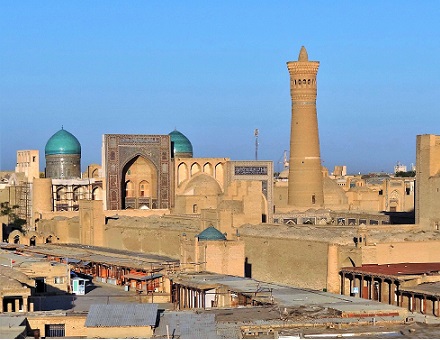
Another UNESCO World Heritage Site, Bukhara is known for its well-preserved old town, which is home to over 140 historic buildings and monuments, including the Kalyan Minaret and the Ark of Bukhara.

With its roots dating back to ancient times, Termez offers visitors a glimpse into the region's diverse past. The city is adorned with archaeological treasures, including Buddhist and Islamic sites, ancient fortresses, and wellpreserved mausoleums.
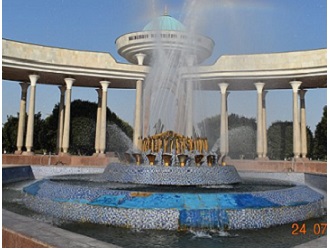
It is a city with captivating history and remarkable cultural heritage. As an ancient Silk Road city, it was once vital hub for trade,cultural exchange.Today, Urgench show cases its architectural wonders, with its historical significance as the former capital of the Khwarazmian Empire.
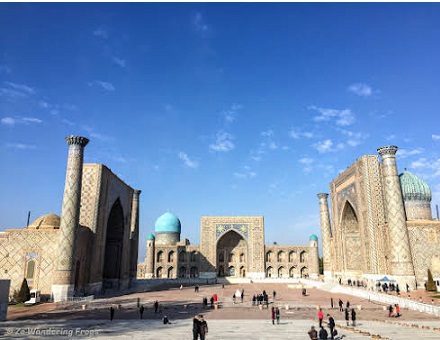
Samarkand is one of the oldest inhabited cities in the world and UNESCO World Heritage Site. It is home to some of most stunning architecture in Central Asia, including the Registan, a square surrounded by three madrasahs.
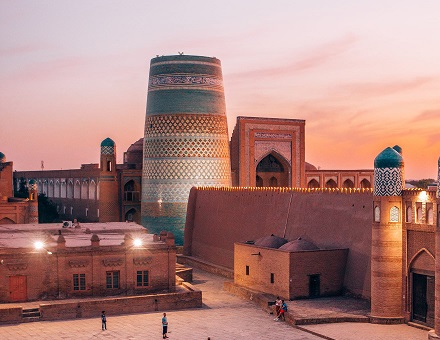
Located in the western part of the country, Khiva is a walled city that dates back to the 10th century. It is home to many historic buildings and monuments, including the Kalta Minor minaret and the Kunya-Ark fortress.
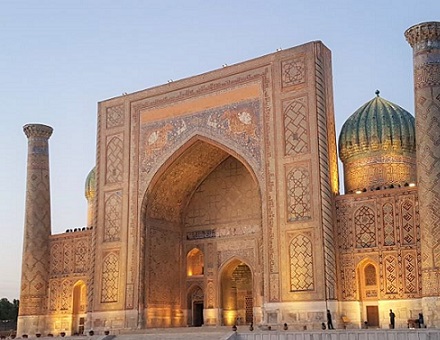
Also known as the "Gate of Samarqand," this iconic structure is a popular spot for taking photos enjoying the view of the city. Samarkand has long been a central point for trade across the region, and was a substantial city renowned for its craft production,

Located in the Tian Shan Mountain range, the Chimgan Mountains are a popular destination for hiking, skiing, and other outdoor activities. The area is known for its stunning alpine scenery and is home to many rare and endangered species.